My
List |
Addition Date
|
Target
|
Mission
|
Instrument
|
Size
|

|
1999-10-07 |
Callisto
|
Galileo
|
Solid-State Imaging
|
1440x669x1 |
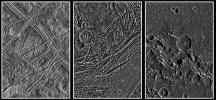
|
-
PIA01656:
-
Europa, Ganymede, and Callisto: Surface Comparison at High Spatial Resolution
Full Resolution:
TIFF
(1.017 MB)
JPEG
(271.6 kB)
|

|
1999-10-07 |
Ganymede
|
Galileo
|
Solid-State Imaging
|
610x900x1 |

|
-
PIA01660:
-
Pedestal Craters Gula and Achelous on Ganymede
Full Resolution:
TIFF
(290 kB)
JPEG
(126.9 kB)
|

|
1999-10-07 |
Ganymede
|
Galileo
|
Solid-State Imaging
|
1078x900x1 |
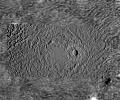
|
-
PIA01659:
-
Buto Facula - A Palimpsest on Ganymede
Full Resolution:
TIFF
(412.8 kB)
JPEG
(264.9 kB)
|

|
1999-10-07 |
Ganymede
|
Galileo
|
Solid-State Imaging
|
590x900x1 |

|
-
PIA01658:
-
Dome Crater Neith on Jupiter's Satellite Ganymede
Full Resolution:
TIFF
(642.1 kB)
JPEG
(193.4 kB)
|

|
1999-10-07 |
Callisto
|
Galileo
|
Solid-State Imaging
|
449x449x1 |
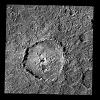
|
-
PIA01657:
-
Crater Tindr on Callisto - an Oblique Impact?
Full Resolution:
TIFF
(157 kB)
JPEG
(67.49 kB)
|

|
1999-09-30 |
Europa
|
Galileo
|
Near Infrared Mapping Spectrometer
|
837x796x3 |
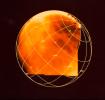
|
-
PIA02500:
-
Sulfuric Acid on Europa
Full Resolution:
TIFF
(1.208 MB)
JPEG
(55.43 kB)
|

|
1999-09-27 |
Jupiter
|
Galileo
|
Solid-State Imaging
|
1200x700x1 |
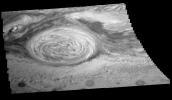
|
-
PIA00829:
-
Mosaic of Jupiter's Great Red Spot (in the near infrared)
Full Resolution:
TIFF
(373.9 kB)
JPEG
(75.8 kB)
|

|
1999-08-27 |
Io
|
Galileo
|
Solid-State Imaging
|
2000x1380x3 |
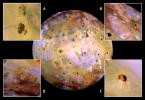
|
-
PIA02319:
-
Closeups of Io (false color)
Full Resolution:
TIFF
(6.806 MB)
JPEG
(301 kB)
|

|
1999-08-27 |
Io
|
Galileo
|
Solid-State Imaging
|
2796x2796x3 |
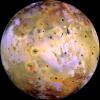
|
-
PIA02309:
-
Global image of Io (false color)
Full Resolution:
TIFF
(17.09 MB)
JPEG
(908.3 kB)
|

|
1999-08-27 |
Io
|
Galileo
|
Solid-State Imaging
|
2796x2796x3 |
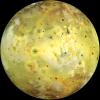
|
-
PIA02308:
-
Global image of Io (true color)
Full Resolution:
TIFF
(17.28 MB)
JPEG
(789.8 kB)
|

|
1999-08-27 |
Europa
|
Galileo
|
Solid-State Imaging
|
2530x1327x3 |
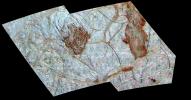
|
-
PIA02099:
-
Thera and Thrace on Europa
Full Resolution:
TIFF
(7.171 MB)
JPEG
(544.1 kB)
|

|
1999-08-27 |
Jupiter
|
Galileo
|
Solid-State Imaging
|
2200x1200x3 |
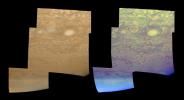
|
-
PIA02098:
-
Clouds and Hazes of Jupiter's Southern Hemisphere
Full Resolution:
TIFF
(3.798 MB)
JPEG
(163.1 kB)
|

|
1999-08-27 |
Jupiter
|
Galileo
|
Solid-State Imaging
|
1300x1200x3 |
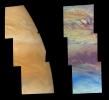
|
-
PIA02097:
-
Cloud Features North of Jupiter's Equator
Full Resolution:
TIFF
(2.356 MB)
JPEG
(87.9 kB)
|

|
1999-04-15 |
Jupiter
|
Galileo
|
Solid-State Imaging
|
640x485x1 |
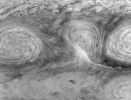
|
-
PIA01655:
-
Dynamics of Jupiter's Long-lived White Ovals

Full Resolution:
|

|
1999-03-18 |
Jupiter
|
Galileo
|
Solid-State Imaging
|
640x485x1 |
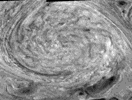
|
-
PIA01651:
-
Dynamics after Historic Merger of Storms on Jupiter

Full Resolution:
|

|
1999-01-18 |
Europa
|
Galileo
|
Solid-State Imaging
|
1192x1636x3 |

|
-
PIA01669:
-
Model of Europa's Subsurface Structure
Full Resolution:
TIFF
(1.953 MB)
JPEG
(174 kB)
|

|
1999-01-18 |
Io
|
Galileo
|
Solid-State Imaging
|
708x526x3 |
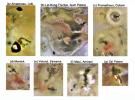
|
-
PIA01668:
-
Key Volcanic Centers on Io
Full Resolution:
TIFF
(884.3 kB)
JPEG
(56.36 kB)
|

|
1999-01-18 |
Io
|
Galileo
|
Solid-State Imaging
|
800x800x3 |
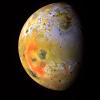
|
-
PIA01667:
-
Io's Pele Hemisphere After Pillan Changes
Full Resolution:
TIFF
(1.347 MB)
JPEG
(56.68 kB)
|

|
1999-01-18 |
Ganymede
|
Galileo
|
Solid-State Imaging
|
687x687x3 |
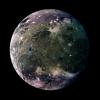
|
-
PIA01666:
-
Ganymede's Trailing Hemisphere
Full Resolution:
TIFF
(847.8 kB)
JPEG
(47.68 kB)
|

|
1999-01-18 |
Europa
|
Galileo
|
Solid-State Imaging
|
1050x520x3 |
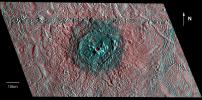
|
-
PIA01665:
-
Red-Blue Three Dimensional View of Pwyll crater
Full Resolution:
TIFF
(1.248 MB)
JPEG
(152 kB)
|

|
1999-01-18 |
Europa
|
Galileo
|
Solid-State Imaging
|
1152x696x3 |
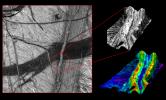
|
-
PIA01664:
-
Three Dimensional View of Double Ridges on Europa
Full Resolution:
TIFF
(955 kB)
JPEG
(152.7 kB)
|

|
1999-01-18 |
Io
|
Galileo
|
Solid-State Imaging
|
1152x614x1 |
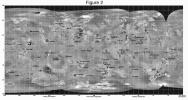
|
-
PIA01663:
-
Highest Resolution Mosaic of Io
Full Resolution:
TIFF
(247.9 kB)
JPEG
(126.2 kB)
|

|
1999-01-18 |
Europa
|
Galileo
|
Solid-State Imaging
|
700x540x1 |
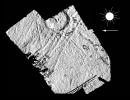
|
-
PIA01662:
-
Topography Around Europa's Cilix Crater
Full Resolution:
TIFF
(158.3 kB)
JPEG
(76.28 kB)
|

|
1999-01-18 |
Europa
|
Galileo
|
Solid-State Imaging
|
988x900x1 |
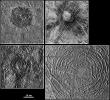
|
-
PIA01661:
-
Large Impact Structures on Europa
Full Resolution:
TIFF
(509.8 kB)
JPEG
(272.6 kB)
|

|
1998-12-07 |
Jupiter
|
Galileo
|
Photopolarimeter-Radiometer
|
1500x2571x3 |

|
-
PIA01496:
-
Jovian Dark Spot
Full Resolution:
TIFF
(2.798 MB)
JPEG
(143.5 kB)
|

|
1998-12-07 |
Europa
|
Galileo
|
Solid-State Imaging
|
1152x626x3 |
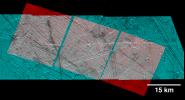
|
-
PIA01654:
-
Rugged Terrain on Europa in 3-D Stereo
Full Resolution:
TIFF
(1.106 MB)
JPEG
(117.9 kB)
|

|
1998-12-07 |
Europa
|
Galileo
|
Solid-State Imaging
|
2476x1988x1 |
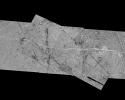
|
-
PIA01653:
-
Rugged Terrain on Europa
Full Resolution:
TIFF
(2.31 MB)
JPEG
(433.8 kB)
|

|
1998-12-07 |
Io
|
Galileo
|
Solid-State Imaging
|
1152x887x3 |
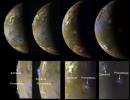
|
-
PIA01652:
-
Sequence Showing Active Volcanic Plumes on Io
Full Resolution:
TIFF
(2.093 MB)
JPEG
(73 kB)
|

|
1998-12-07 |
Jupiter
|
Galileo
|
Solid-State Imaging
|
900x900x3 |
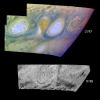
|
-
PIA01650:
-
Historic Merger of Storms on Jupiter
Full Resolution:
TIFF
(1.153 MB)
JPEG
(75.13 kB)
|

|
1998-12-07 |
Callisto
|
Galileo
|
Solid-State Imaging
|
1152x884x3 |
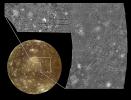
|
-
PIA01649:
-
The Valhalla Multi-ring Structure on Callisto
Full Resolution:
TIFF
(1.477 MB)
JPEG
(175.5 kB)
|

|
1998-12-07 |
Callisto
|
Galileo
|
Solid-State Imaging
|
1152x884x3 |
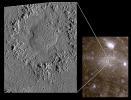
|
-
PIA01648:
-
Impact Craters on Icy Callisto: Doh Crater and Asgard
Full Resolution:
TIFF
(1.689 MB)
JPEG
(218.7 kB)
|

|
1998-12-07 |
Europa
|
Galileo
|
Solid-State Imaging
|
1152x507x3 |
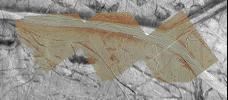
|
-
PIA01647:
-
Agenor Linea in Color
Full Resolution:
TIFF
(1.409 MB)
JPEG
(113.3 kB)
|

|
1998-12-07 |
Europa
|
Galileo
|
Solid-State Imaging
|
1152x830x1 |
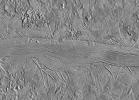
|
-
PIA01646:
-
Agenor Linea at High Resolution
Full Resolution:
TIFF
(447.2 kB)
JPEG
(214.3 kB)
|

|
1998-12-07 |
Europa
|
Galileo
|
Solid-State Imaging
|
1231x558x3 |
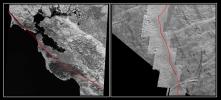
|
-
PIA01645:
-
The San Andreas Fault and a Strike-slip Fault on Europa
Full Resolution:
TIFF
(504.9 kB)
JPEG
(134.7 kB)
|

|
1998-12-07 |
Europa
|
Galileo
|
Solid-State Imaging
|
678x900x1 |

|
-
PIA01644:
-
San Andreas-sized Strike-slip Fault on Europa
Full Resolution:
TIFF
(177.9 kB)
JPEG
(106 kB)
|

|
1998-12-07 |
Europa
|
Galileo
|
Solid-State Imaging
|
453x597x1 |

|
-
PIA01643:
-
A Record of Crustal Movement on Europa
Full Resolution:
TIFF
(271.1 kB)
JPEG
(48 kB)
|

|
1998-12-07 |
Europa
|
Galileo
|
Solid-State Imaging
|
633x900x1 |

|
-
PIA01642:
-
Cracks and Ridges Distorted by Europan Fault Motion
Full Resolution:
TIFF
(161.1 kB)
JPEG
(70.66 kB)
|

|
1998-11-24 |
Europa
|
Galileo
|
Solid-State Imaging
|
1950x850x3 |
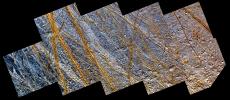
|
-
PIA01641:
-
Double Ridges, Dark Spots, and Smooth Icy Plains on Europa
Full Resolution:
TIFF
(4.186 MB)
JPEG
(582.2 kB)
|

|
1998-11-03 |
Ida
|
Galileo
|
Solid-State Imaging
|
580x400x3 |
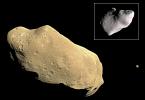
|
-
PIA00333:
-
Asteroid Ida and its Satellite Dactyl in Enhanced Color
Full Resolution:
TIFF
(254.4 kB)
JPEG
(19.73 kB)
|

|
1998-10-21 |
Callisto
|
Galileo
|
|
2220x1700x3 |
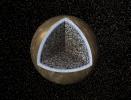
|
-
PIA01478:
-
Callisto Cutaway with Ocean (Artist's Concept)
Full Resolution:
TIFF
(5.246 MB)
JPEG
(490.9 kB)
|

|
1998-10-14 |
Jupiter
|
Galileo
Hubble Space Telescope
|
|
850x950x3 |

|
-
PIA01477:
-
Jupiter's White Ovals
Full Resolution:
TIFF
(648.3 kB)
JPEG
(32.09 kB)
|

|
1998-10-13 |
Europa
|
Galileo
|
Solid-State Imaging
|
747x800x1 |

|
-
PIA01640:
-
Mitten shaped region of Chaotic Terrain on Europa
Full Resolution:
TIFF
(609.5 kB)
JPEG
(177.1 kB)
|

|
1998-10-13 |
Jupiter
|
Galileo
|
Solid-State Imaging
|
592x537x3 |
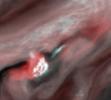
|
-
PIA01639:
-
Water Cloud Thunderstorm Northwest of Great Red Spot
Full Resolution:
TIFF
(621.9 kB)
JPEG
(19.42 kB)
|

|
1998-10-13 |
Jupiter
|
Galileo
|
Solid-State Imaging
|
1152x855x1 |
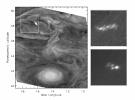
|
-
PIA01638:
-
Jovian Lightning and the Daytime Storm
Full Resolution:
TIFF
(188.1 kB)
JPEG
(89.44 kB)
|

|
1998-10-13 |
Io
|
Galileo
|
Solid-State Imaging
|
689x350x3 |
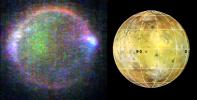
|
-
PIA01637:
-
Io's Aurorae
Full Resolution:
TIFF
(638 kB)
JPEG
(46.23 kB)
|

|
1998-10-13 |
Jupiter
|
Galileo
|
Solid-State Imaging
|
880x620x3 |
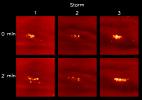
|
-
PIA01636:
-
Changing Lightning Storms on Jupiter
Full Resolution:
TIFF
(84.96 kB)
JPEG
(37.34 kB)
|

|
1998-10-13 |
Io
|
Galileo
|
Solid-State Imaging
|
1054x352x3 |
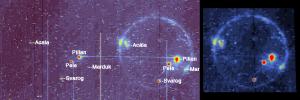
|
-
PIA01635:
-
Io in Eclipse reveals High Temperature Hot Spots
Full Resolution:
TIFF
(323.3 kB)
JPEG
(59.78 kB)
|

|
1998-10-13 |
Callisto
|
Galileo
|
Solid-State Imaging
|
6490x13101x1 |

|
-
PIA01634:
-
Asgard Multi-Ring Structure on Callisto
Full Resolution:
TIFF
(51.5 MB)
JPEG
(5.352 MB)
|

|
1998-10-13 |
Europa
|
Galileo
|
Solid-State Imaging
|
2686x2494x1 |
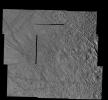
|
-
PIA01633:
-
The Tyre multi-ring Structure on Europa
Full Resolution:
TIFF
(6.208 MB)
JPEG
(1.347 MB)
|

|
1998-10-13 |
Callisto
|
Galileo
|
Solid-State Imaging
|
720x703x1 |
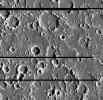
|
-
PIA01632:
-
Callisto's Varied Crater Landscape
Full Resolution:
TIFF
(395.8 kB)
JPEG
(126 kB)
|

|
1998-10-13 |
Callisto
|
Galileo
|
Solid-State Imaging
|
800x799x1 |
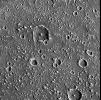
|
-
PIA01631:
-
So few Small Craters on Callisto
Full Resolution:
TIFF
(528.1 kB)
JPEG
(188.6 kB)
|

|
1998-10-13 |
Callisto
|
Galileo
|
Solid-State Imaging
|
1422x1252x1 |
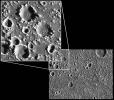
|
-
PIA01630:
-
Callisto: Pits or Craters?
Full Resolution:
TIFF
(1.007 MB)
JPEG
(237.7 kB)
|

|
1998-10-13 |
Callisto
|
Galileo
|
|
800x799x1 |
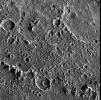
|
-
PIA01629:
-
Textured Terrain in Callisto's Asgard Basin
Full Resolution:
TIFF
(600.1 kB)
JPEG
(189.1 kB)
|

|
1998-09-15 |
J Rings
|
Galileo
|
Solid-State Imaging
|
1800x2700x3 |

|
-
PIA01628:
-
Jupiter's Main and Gossamer Ring Structures
Full Resolution:
TIFF
(1.874 MB)
JPEG
(141.2 kB)
|

|
1998-09-15 |
J Rings
|
Galileo
|
Solid-State Imaging
|
2560x1920x3 |

|
-
PIA01627:
-
Jupiter's Inner Satellites and Ring Components
Full Resolution:
TIFF
(2.915 MB)
JPEG
(196.2 kB)
|

|
1998-09-15 |
Io
|
Galileo
|
Solid-State Imaging
|
471x404x3 |
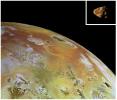
|
-
PIA01626:
-
Comparison of Amalthea to Io
Full Resolution:
TIFF
(159.3 kB)
JPEG
(30.32 kB)
|

|
1998-09-15 |
Amalthea
|
Galileo
|
Solid-State Imaging
|
1539x802x1 |
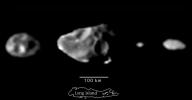
|
-
PIA01625:
-
Scale Comparison of the Inner Small Satellites of Jupiter
Full Resolution:
TIFF
(99.39 kB)
JPEG
(38.67 kB)
|

|
1998-09-15 |
Amalthea
|
Galileo
|
Solid-State Imaging
|
1539x1066x1 |
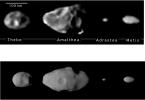
|
-
PIA01624:
-
Shapes of the Small Inner Satellites of Jupiter
Full Resolution:
TIFF
(163.2 kB)
JPEG
(67.18 kB)
|

|
1998-09-15 |
J Rings
|
Galileo
|
Solid-State Imaging
|
2016x1529x3 |
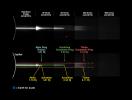
|
-
PIA01623:
-
Jupiter's Gossamer Ring Structure
Full Resolution:
TIFF
(942.3 kB)
JPEG
(176.7 kB)
|

|
1998-09-15 |
J Rings
|
Galileo
|
Solid-State Imaging
|
1078x636x1 |
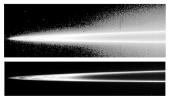
|
-
PIA01622:
-
Jupiter's Main Ring and Halo
Full Resolution:
TIFF
(299.6 kB)
JPEG
(62.45 kB)
|

|
1998-09-15 |
J Rings
|
Galileo
|
Solid-State Imaging
|
2663x1418x1 |
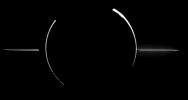
|
-
PIA01621:
-
Jupiter's Ring System
Full Resolution:
TIFF
(145.1 kB)
JPEG
(62.26 kB)
|

|
1998-08-03 |
Ganymede
|
Galileo
|
Solid-State Imaging
|
800x800x3 |
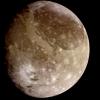
|
-
PIA00716:
-
Ganymede Color Global
Full Resolution:
TIFF
(1.121 MB)
JPEG
(46.44 kB)
|

|
1998-07-15 |
Ganymede
|
Galileo
|
Solid-State Imaging
|
790x1413x1 |

|
-
PIA01606:
-
Completing a Global Map of Ganymede
Full Resolution:
TIFF
(763.1 kB)
JPEG
(129.1 kB)
|

|
1998-07-15 |
Ganymede
|
Galileo
|
Solid-State Imaging
|
900x600x1 |
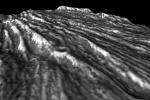
|
-
PIA01620:
-
Perspective View of Bright Ridges in Uruk Sulcus
Full Resolution:
TIFF
(401.7 kB)
JPEG
(63.04 kB)
|

|
1998-07-15 |
Ganymede
|
Galileo
|
Solid-State Imaging
|
782x784x1 |
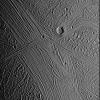
|
-
PIA01619:
-
Morning in Tiamat Sulcus
Full Resolution:
TIFF
(611.1 kB)
JPEG
(205.8 kB)
|

|
1998-07-15 |
Ganymede
|
Galileo
|
Solid-State Imaging
|
706x551x1 |
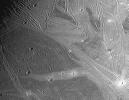
|
-
PIA01618:
-
Regional View of Ganymede
Full Resolution:
TIFF
(379.8 kB)
JPEG
(91.26 kB)
|

|
1998-07-15 |
Ganymede
|
Galileo
|
Solid-State Imaging
|
797x798x1 |
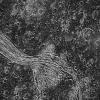
|
-
PIA01617:
-
Marius Regio, Ganymede
Full Resolution:
TIFF
(559.4 kB)
JPEG
(199.5 kB)
|

|
1998-07-15 |
Ganymede
|
Galileo
|
Solid-State Imaging
|
506x360x1 |
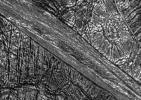
|
-
PIA01616:
-
Highly Fractured Dark and Bright Terrain
Full Resolution:
TIFF
(172.8 kB)
JPEG
(56.59 kB)
|

|
1998-07-15 |
Ganymede
|
Galileo
|
Solid-State Imaging
|
949x559x1 |
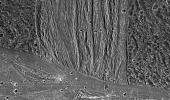
|
-
PIA01615:
-
Swaths of Grooved Terrain on Ganymede
Full Resolution:
TIFF
(499.9 kB)
JPEG
(160.6 kB)
|

|
1998-07-15 |
Ganymede
|
Galileo
|
Solid-State Imaging
|
531x361x1 |
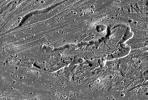
|
-
PIA01614:
-
"Calderas" on Ganymede?
Full Resolution:
TIFF
(204.8 kB)
JPEG
(55.26 kB)
|

|
1998-07-15 |
Ganymede
|
Galileo
|
Solid-State Imaging
|
800x798x1 |
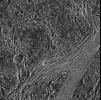
|
-
PIA01613:
-
Fractures in Nicholson Regio
Full Resolution:
TIFF
(626.8 kB)
JPEG
(202.1 kB)
|

|
1998-07-15 |
Ganymede
|
Galileo
|
Solid-State Imaging
|
615x519x1 |
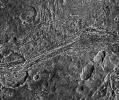
|
-
PIA01612:
-
A Tumultuous Past for Ganymede's Dark Terrain
Full Resolution:
TIFF
(293 kB)
JPEG
(99.24 kB)
|

|
1998-07-15 |
Ganymede
|
Galileo
|
Solid-State Imaging
|
692x480x3 |
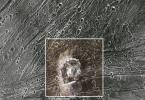
|
-
PIA01611:
-
Kittu Dark Ray Crater
Full Resolution:
TIFF
(664.6 kB)
JPEG
(97.1 kB)
|

|
1998-07-15 |
Ganymede
|
Galileo
|
Solid-State Imaging
|
392x398x1 |

|
-
PIA01610:
-
Anatomy of a Torn Comet
Full Resolution:
TIFF
(168.6 kB)
JPEG
(54 kB)
|

|
1998-07-15 |
Ganymede
|
Galileo
|
Solid-State Imaging
|
813x753x1 |
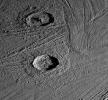
|
-
PIA01609:
-
Fresh Impact Craters on Ganymede
Full Resolution:
TIFF
(576.4 kB)
JPEG
(196.4 kB)
|

|
1998-07-15 |
Ganymede
|
Galileo
|
Solid-State Imaging
|
707x1049x1 |

|
-
PIA01608:
-
High Latitude "Bright" and "Dark" Terrains on Ganymede
Full Resolution:
TIFF
(534 kB)
JPEG
(95.77 kB)
|

|
1998-07-15 |
Ganymede
|
Galileo
|
Solid-State Imaging
|
392x398x1 |

|
-
PIA01607:
-
Dark-floored Impact Craters on Ganymede
Full Resolution:
TIFF
(189.6 kB)
JPEG
(60.53 kB)
|

|
1998-07-02 |
Io
|
Galileo
|
|
800x800x1 |
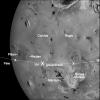
|
-
PIA01605:
-
Io imaging during Galileo's 24th orbit
Full Resolution:
TIFF
(512 kB)
JPEG
(91.06 kB)
|

|
1998-07-02 |
Io
|
Galileo
|
Solid-State Imaging
|
581x900x3 |

|
-
PIA01604:
-
Close-up color view of Io
Full Resolution:
TIFF
(1.769 MB)
JPEG
(78.57 kB)
|

|
1998-06-17 |
Europa
|
Galileo
|
Near Infrared Mapping Spectrometer
|
820x470x1 |
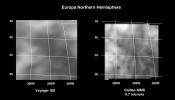
|
-
PIA00840:
-
Infrared Observations of Europa's Trailing Side
Full Resolution:
TIFF
(94.4 kB)
JPEG
(29.74 kB)
|

|
1998-06-10 |
Jupiter
|
Galileo
|
Solid-State Imaging
|
900x900x3 |
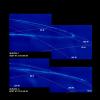
|
-
PIA01603:
-
Time Series of Jupiter's Aurora
Full Resolution:
TIFF
(820.7 kB)
JPEG
(73.32 kB)
|

|
1998-06-10 |
Jupiter
|
Galileo
|
Solid-State Imaging
|
900x950x3 |

|
-
PIA01602:
-
Time Series of Jupiter's Aurora
Full Resolution:
TIFF
(1.121 MB)
JPEG
(91.86 kB)
|

|
1998-06-10 |
Jupiter
|
Galileo
|
Solid-State Imaging
|
900x950x3 |

|
-
PIA01601:
-
Time Series of Jupiter's Aurora
Full Resolution:
TIFF
(976.6 kB)
JPEG
(83.63 kB)
|

|
1998-06-10 |
Jupiter
|
Galileo
|
Solid-State Imaging
|
900x900x3 |
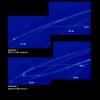
|
-
PIA01600:
-
Time Series of Jupiter's Aurora
Full Resolution:
TIFF
(773.5 kB)
JPEG
(61.78 kB)
|

|
1998-06-08 |
Moon
|
Galileo
|
|
1986x1986x3 |
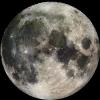
|
-
PIA00405:
-
Earth's Moon
Full Resolution:
TIFF
(8.683 MB)
JPEG
(403.3 kB)
|

|
1998-06-08 |
Moon
|
Galileo
|
|
3053x3053x3 |
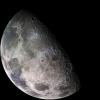
|
-
PIA00404:
-
Moon - North Polar Mosaic, Color
Full Resolution:
TIFF
(13.03 MB)
JPEG
(713.7 kB)
|

|
1998-06-04 |
Earth
|
Galileo
|
Solid-State Imaging
|
1700x2164x3 |

|
-
PIA00342:
-
The Earth & Moon
Full Resolution:
TIFF
(7.005 MB)
JPEG
(262.2 kB)
|

|
1998-06-04 |
Ida
|
Galileo
|
Solid-State Imaging
|
3195x4650x1 |

|
-
PIA00332:
-
Ida and Gaspra
Full Resolution:
TIFF
(5.869 MB)
JPEG
(815 kB)
|

|
1998-06-04 |
Ida
|
Galileo
|
Solid-State Imaging
|
1563x915x3 |
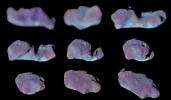
|
-
PIA00331:
-
Nine Galileo Views in Exaggerated Color of Main-Belt Asteroid Ida
Full Resolution:
TIFF
(1.713 MB)
JPEG
(76.92 kB)
|

|
1998-06-04 |
Ida
|
Galileo
|
Solid-State Imaging
|
1563x915x3 |
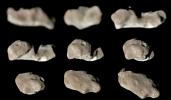
|
-
PIA00330:
-
Nine Galileo Views in Natural Color of Main-Belt Asteroid Ida
Full Resolution:
TIFF
(1.692 MB)
JPEG
(75.18 kB)
|

|
1998-05-21 |
Europa
|
Galileo
|
Solid-State Imaging
|
3500x2220x1 |
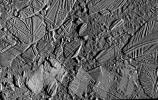
|
-
PIA01403:
-
A Closer Look at Chaos on Europa
Full Resolution:
TIFF
(7.139 MB)
JPEG
(1.036 MB)
|

|
1998-05-21 |
Europa
|
Galileo
|
Solid-State Imaging
|
4000x2024x1 |
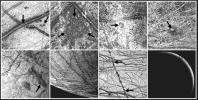
|
-
PIA01407:
-
Europa Imaging Highlights During GEM
Full Resolution:
TIFF
(6.84 MB)
JPEG
(791.3 kB)
|

|
1998-05-21 |
Europa
|
Galileo
|
Solid-State Imaging
|
856x407x3 |
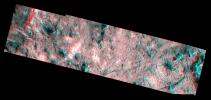
|
-
PIA01406:
-
Topography within Europa's Mannann'an Crater
Full Resolution:
TIFF
(405.7 kB)
JPEG
(51.08 kB)
|

|
1998-05-21 |
Europa
|
Galileo
|
Solid-State Imaging
|
814x560x1 |
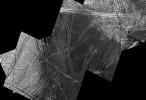
|
-
PIA01405:
-
A Dark Spot on Europa
Full Resolution:
TIFF
(353.3 kB)
JPEG
(116.1 kB)
|

|
1998-05-21 |
Europa
|
Galileo
|
Solid-State Imaging
|
800x400x1 |
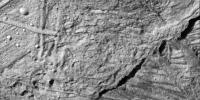
|
-
PIA01404:
-
Small Craters on Europa
Full Resolution:
TIFF
(305.6 kB)
JPEG
(70.33 kB)
|

|
1998-05-21 |
Europa
|
Galileo
|
Solid-State Imaging
|
1042x643x3 |
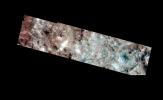
|
-
PIA01402:
-
Mannann'an Crater
Full Resolution:
TIFF
(647.6 kB)
JPEG
(51.43 kB)
|

|
1998-05-21 |
Europa
|
Galileo
|
Solid-State Imaging
|
2700x2200x1 |
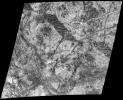
|
-
PIA01401:
-
Scrambled Ice
Full Resolution:
TIFF
(3.565 MB)
JPEG
(653.9 kB)
|

|
1998-05-08 |
Europa
|
Galileo
|
Solid-State Imaging
|
2605x3073x1 |

|
-
PIA01084:
-
Flow-like Features On Europa
Full Resolution:
TIFF
(4.78 MB)
JPEG
(471.9 kB)
|

|
1998-05-08 |
Europa
|
Galileo
|
Solid-State Imaging
|
2150x1950x1 |
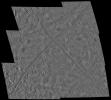
|
-
PIA01092:
-
Geologic Evidence of Internal Activity on Europa
Full Resolution:
TIFF
(3.502 MB)
JPEG
(689.3 kB)
|

|
1998-05-08 |
Io
|
Galileo
|
Solid-State Imaging
|
1927x619x3 |

|
-
PIA01400:
-
The Galilean Satellites
Full Resolution:
TIFF
(2.237 MB)
JPEG
(134.9 kB)
|

 Planetary Data System
Planetary Data System





















































































































